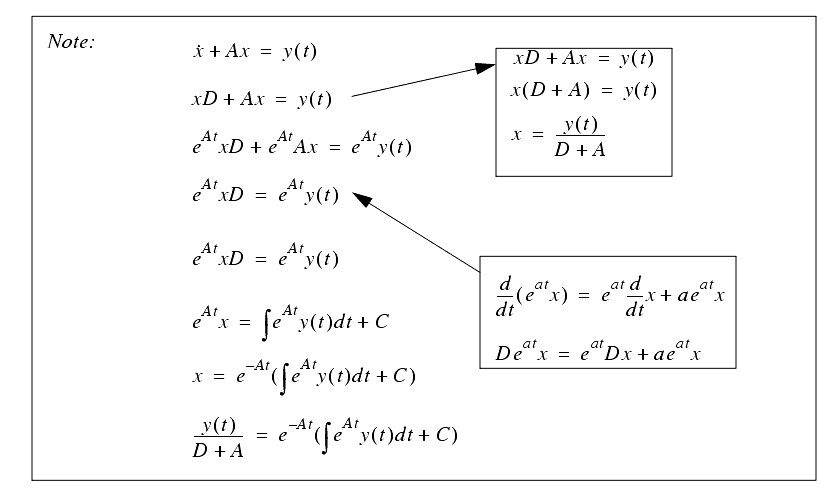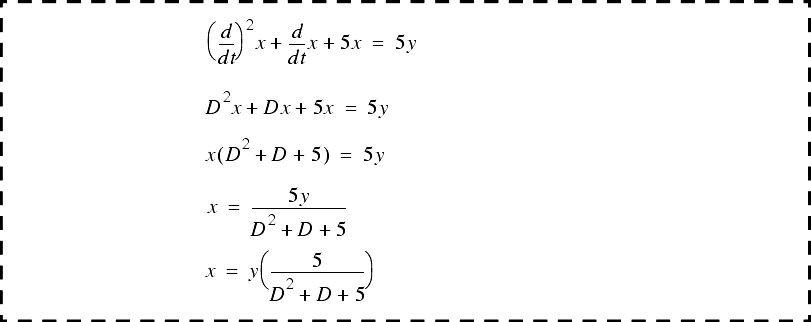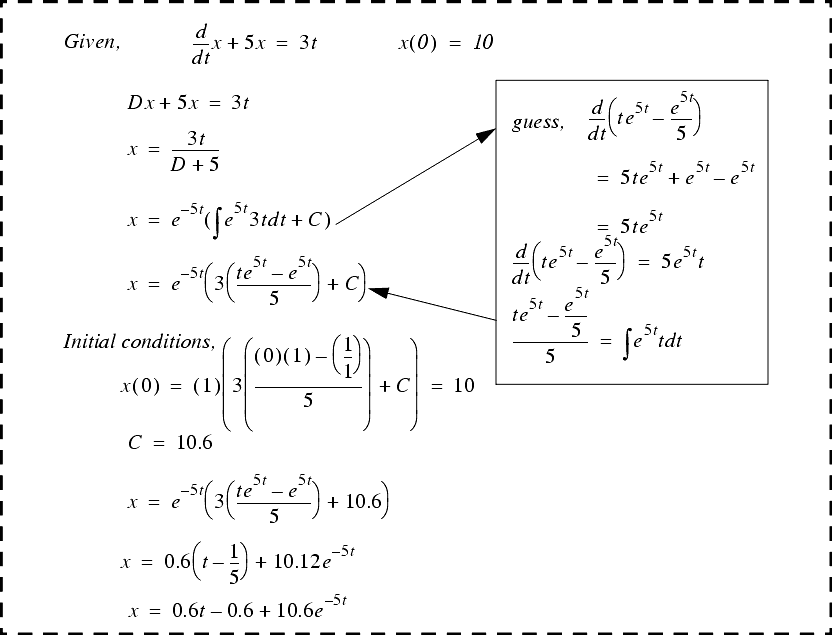6.2 THE DIFFERENTIAL OPERATOR
������������
The differential operator 'd/dt' can be written in a number of forms. In this book there have been two forms used thus far, d/dt x and x-dot. For convenience we will add a third, 'D'. The basic definition of this operator, and related operations are shown in Figure 6.1. In basic terms the operator can be manipulated as if it is a normal variable. Multiplying by 'D' results in a derivative, dividing by 'D' results in an integral. The first-order axiom can be used to help solve a first-order differential equation.
Figure 6.1 General properties of the differential operator
Figure 6.2 Proof of the first-order axiom
Figure 6.3 contains an example of the manipulation of a differential equation using the 'D' operator. The solution begins by replacing the 'd/dt' terms with the 'D' operator. After this the equation is rearranged to simplify the expression. Notice that the manipulation follows the normal rules of algebra.
Figure 6.3 Example: A simplification with the differential operator
An example of the solution of a first-order differential equation is given in Figure 6.4. This begins by replacing the differential operator and rearranging the equation. The first-order axiom is then used to obtain the solution. The initial conditions are then used to calculate the coefficient values.
Figure 6.4 Example: A a solution for a first-order system






